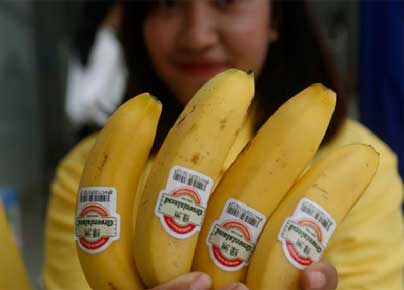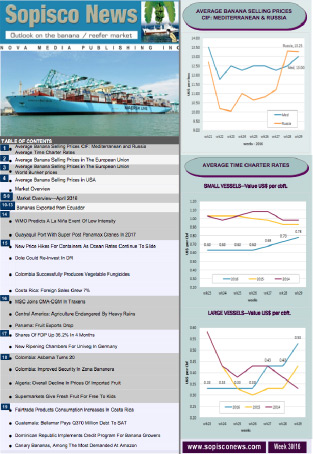Ecuadorian Bananas Enter China with Lower Tariffs Due to FTA
2024-06-14

The first shipment of Ecuadorian bananas, benefiting from the trade agreement signed with China, which took effect on May 1, has already arrived in the Asian country. Richard Salazar, the executive director of the Association of Marketing and Export of Bananas of Ecuador (Acorbanec), confirmed this. The bananas that left Ecuador by sea arrived in China between June 5 and 8. He explained that the transit time for this cargo from Ecuador to China is approximately 35 to 38 days, depending on the destination ports.
These initial banana shipments entered China with the advantage of the trade agreement. Salazar recalled that this implies a 1% reduction in the tariff that Ecuadorian bananas pay to enter the Chinese market, which was 10% before the agreement. Now, the fruit enters with a 9% tariff, and the treaty establishes a schedule of 1% relief annually until it reaches a 0% tariff by 2033. According to Salazar, preliminary figures from the sector indicate that from January to May, Ecuador exported 5.2 million boxes of bananas to China, representing a cumulative increase of 4% over those five months. If we analyze only the figures for May, the first month of the agreement, banana exports to the Asian giant were 1 million boxes, translating into a 1% increase. Salazar explains that this slight increase could have been higher without the rise in spot prices in recent weeks. "China, although it's true that it buys the vast majority on the spot, this market cannot pay high prices for spot fruit," said the head of Acorbanec. According to the latest official report from the Ecuadorian Federation of Exporters (Fedexpor), which includes figures for the first quarter of 2024 - January to March - bananas were the second most exported Ecuadorian product to China, behind only shrimp. Banana exports generated $37 million during that period, with a 13% increase in foreign exchange and a 9% increase in volume, while shrimp exports were $653 million. However, they recorded a 43% decrease in foreign exchange and a 27% decrease in volume.









